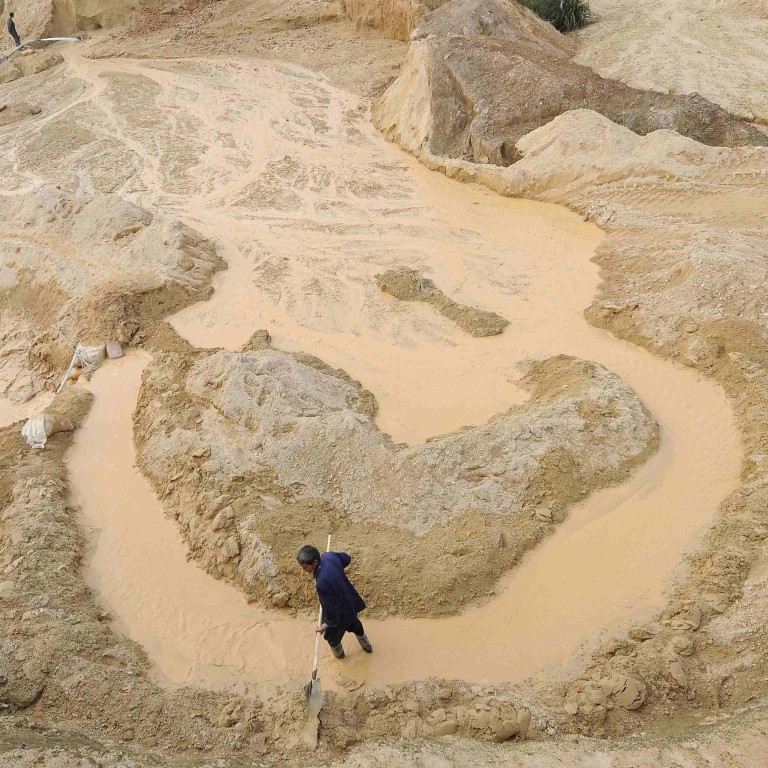
Explainer: Can the US take back some control of rare earths from China?
- Beijing, as the lowest cost producer, can lower prices to put emerging rivals out of business
China has retaliated against the United States’ imposition of up to 25 per cent tariffs on US$200 billion worth of Chinese exports, by slapping duties on US$60 billion worth of US products from June 1, including rare earth products.
One US company, MP Materials, is the primary target of these duties, which will be raised from the 10 per cent imposed in September. The company runs the US’s only commercial scale rare earth mining project, and relies on Chinese downstream processors to buy its products.
The case highlights the need for the US and other countries to diversify their supply sources for these strategic materials, ensuring a stable supply of the 17 elements critical to the manufacture of products ranging from electric vehicles to smartphones and cameras. China accounts for 90 per cent of the global supply of rare earth elements.
What is the cost of turning semi-processed concentrates into rare earth elements? Is it profitable?
Every producer has different production costs since each deals with a different mixture of rare earth elements depending on the content of their ore supply. In Baotou, northern China, where the world’s biggest and most competitive rare earth production base is located, rare earth oxides can be produced for US$7-10 per kilogram, according to rare earths and electric battery metals consultancy Adamas Intelligence.
Trade war: will China use ‘nuclear option’ of banning rare earth exports to US?
Output here typically contains about 50 per cent cerium, 20 per cent lanthanum and 20-25 per cent praseodymium and neodymium. The remaining 5-10 per cent comprises other rare earth elements. The price of cerium and lanthanum oxides is about US$2 a kilogram, compared with US$45 for neodymium-praseodymium oxide. This means the bulk of profits come from the latter, a key magnet rare earth input material.
Shanghai-listed China Northern Rare Earth Group High-Tech, one of the country’s major producers, made a net profit of 606 million yuan (US$87.8 million) last year on revenue of 13.85 billion yuan, at a profit margin of just 4.4 per cent.
How big is China’s advantage?
The mines in Baotou produce about 60,000 tonnes of rare earth oxides a year, or half of total production in China. This is much bigger than the 20,000 tonnes produced in Australia, mainly by Lynas, a company financially supported by its Japanese customers. A new project in Burundi owned by London-listed Rainbow Rare Earths is targeting the production of 5,000 tonnes of concentrate – containing about half that tonnage of valuable oxides – this year. Lynas said on Monday it had signed a preliminary agreement with Texas-based chemical firm Blue Line to set up a rare earths processing facility in the US.
How big is the industry’s environmental footprint?
Upstream rare earth mining involves the unearthing of a large amount of materials. About 8-8.5 tonnes of rare earth oxides can be produced from 100 tonnes of rocks and dirt removed from the Mountain Pass project in California. In Baotou, northern China, this number stands at 5-6 tonnes.
In California, strict environmental regulations mean waste water from mining activities must be treated before discharge. In China, local governments have stepped up the implementation of environmental regulations in recent years to clamp down on illegal mining that skirts Beijing’s quota system.
Does China’s dominance in rare earths hold potential leverage in trade war?
MP Materials’ chief executive, Michael Rosenthal, said its Mountain Pass mine’s ore contains “very low” levels of radioactive substances.
What will it take for the US to regain self-sufficiency in rare earths?
In order for the US to stop relying on Chinese materials, without significant domestic production, it will require Lynas to roughly double its output, as well as a significant output boost by its downstream Japanese magnet producer customers, according to Adamas.
“It is possible, but it will take a lot of time and investment,” said Ryan Castilloux, the consultancy’s managing director.

“It is always a concern for new projects and their investors. If China feels threatened by the emerging competition, as the lowest cost producer it could lower prices to put emerging rivals out of business.
“China may not make a lot of profit mining rare earths and separating them into market-ready oxides, which as an industry is worth just US$4 billion per year. But China dominates all the steps to turn oxides into metals, alloys, magnets, motors and electric cars, and in each of these steps the profits are much greater than at the oxide level.”

